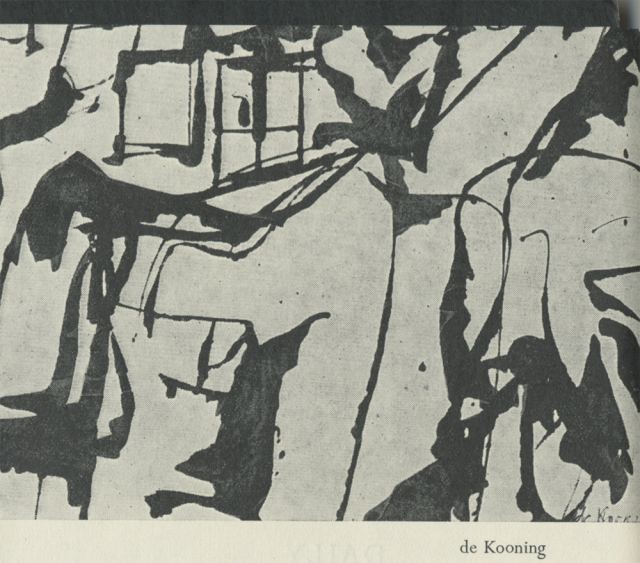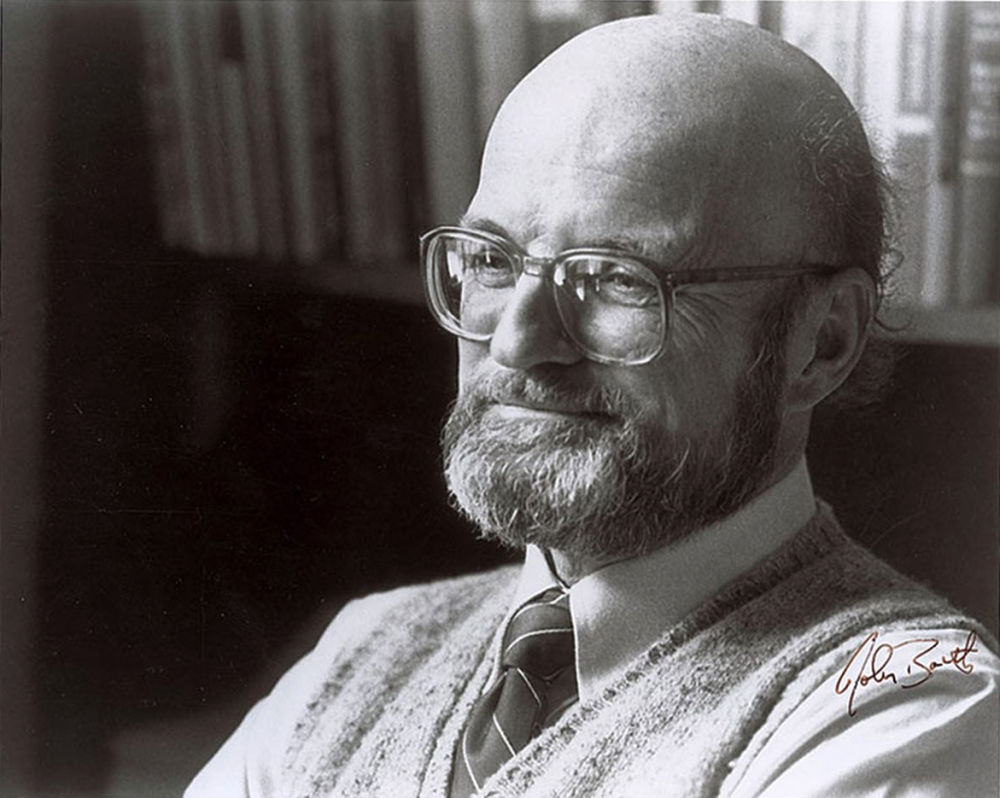
Artists, having an affinity for one another, tend to gather in colonies where they can love and bate each other most conveniently. The location of the colony, as on Eastern Long Island, is often as paradoxical as its component parts. Here, a group of avant-garde painters has chosen to work and live in the very core of conservative territory—the towns of East Hampton, Southampton, and their environs. In these socially formidable summer resorts artists rent, buy and build houses where they can work. They are aware of cashmere-sweatered golfers putting nearby, but they ignore them. The golfers, in turn, sense that something suspicious is being done with paint right down the road, and putt on. It is an uneasy juxtaposition, with very little contact and hardly anything in common—it might almost be a mutual re-affirmation society based on contrast. One can't help wondering why the painters come here where even the rents give pause. Perhaps they return each summer because Jackson Pollock and Robert Motherwell came twelve years ago. OT maybe it is just that Eastern Long Island is remarkably beautiful.
The country is open—potato fields and pastures, lengths of dune and ocean, wastes of scrub oak. the automobile has achieved a local eminence, but not simply as a means of transportation. Here it is judged by more esthetic standards. The artists, like the chauffeured, operate tall vehicles bizarre as Casper Milktoast's, or roar about in slinky European racing models. In some cases the artist has so failed to consider the actual mobility of bis car that, charming though it is, it breaks down continually. There is no real cause for alarm, however, because any other artist is immediately available for consultation. Or almost any golfer, for that matter. But community spirit ends with the closing of the hood. Most of the painters have settled in Springs or Three Mile Harbor, small communities outside East Hampton—on the wrong side of the tracks, some might say. An early farm house, leaning in its silvery frame, is carpetless inside and airy as a gallery. In its bare, vaguely furnished interior bang a few canvases which should he notice the name on the mailbox outside, would make a passing collector's heart pound. The barn behind the house, stripped to make a studio, is skylighted. Nearby zinnias and dahlias thrive beside a gourmet's plot of vegetables and herbs. The parked tricycle, the fishing rods, the fearsome dog, the cats—al! the accoutrements of home in the old sense of home—are here, and perhaps a baseball diamond in the field beyond. This artist has settled down. He loves his house and uses his land. He mows bis lawn, can repair his water pump. One painter tends a vineyard, pressing bis own wine in the fall.
Farther down the road, opposite the graveyard where Jackson Pollock lies buried at the base of a tremendous boulder, the scene is different. In a patch of stubble is a shingled cottage before which five or six of the more curious cars are drawn up. The planting around the house is sparse—a bull briar, hardiest of the local weeds, is doing badly. Facing the road are placed a camp chair and a kitchen chair, weathered and remote, decorated with a disturbing number of athletic supporters. The living room is obscured at first by smoke and people. Then the largest piece of furniture becomes discernible. It is an upright white piano covered with a plastic cloth. It, the two adjacent walls and most of the ceiling, ate as violently splattered with paint as any canvas. Paint has trickled down the window panes and dried, letting a little light filter in through trails of red and purple and green—an effect of runny stained glass. The floor is just as colorful, touched here and there by the chilly blue of a crumpled package of Gauloises cigarettes. High as the room, the painting which caused all the trouble looms up darkly in the corner.
The kitchen, too, is a riot of paint. Huge canvases jut out from behind the ice-box, obscuring the herb shelf entirely. The kitchen table has been converted into a palette—beeping portions of egg and ketchup shades, and a deep Baeuf Bourguignon brown. Beyond, in a little dining alcove, an utterly dead sunflower lies face up on the table. Someone uses it for an ash tray. This house two of the younger painters have rented for the summer. Their landlord, after they left, carefully masked off a square of the living room wall before repainting. Now be has, forever by the piano, an original work to remember them by. If you proceed through town to what might be called the right side of the tracks, the painter chez lui changes with the real estate. A long driveway leads him to a residence which would have tempted Gatsby. It is built of stucco, Anglo-Spanish style, graced in front by lawns and lily gardens, in hack by a wide Flight of stone stairs leading down to the expansive waters of Georgica Pond. Carpets have been strewn about the terraces for the comfort of cocktail guests, who can sip at sunset and observe the swans below. His snow-white poodle and his angora cat saunter through the bleeding-heart and rattle the rhododendron leaves. At a little distance, in a giant oak- paneled studio, this artist works. Above him, on a balcony, hangs an impressive collection of Art Brut. The house itself contains many more fine pieces—a music room of Stills, a hall of Pollocks, a landing lined with Du buffets, all alarming and immense. Beyond, in the boat house, another painter works, and in the gate house still another. - There are, in addition, two more studios on the estate.
This disparate collection of painters all show their work in a gallery in East Hampton organized by three of them. They appropriated a defunct market, painted it white, installed floodlights. They blackened the windows, shutting out entirely the genteel light of Main Street. Outside stand the elm trees and historic homes, lovingly maintained by the Ladies Village Improvement Society. Inside is the world of the artists' vision—vibrant, disquieting. Very few of the golfers venture in to see it.
–Patsy Southgate




